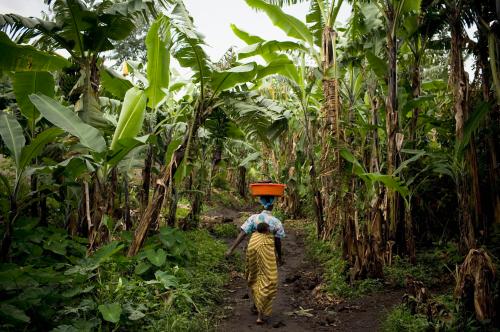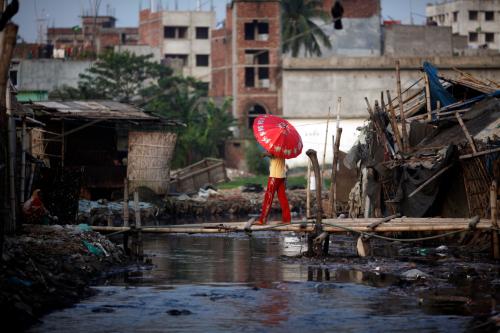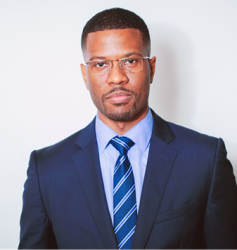Norway’s relationship with Africa is deepening: Norwegian trade with African countries is on the rise, experiencing a 50 percent increase in just 2018. Norway recently established a permanent mission to the African Union, and Norwegian prime minister Erna Solberg visited the 32nd AU Summit in Ethiopia this February, marking her third visit to an African country in a matter of months—following trips to South Africa and Angola. In the African Union and broader arenas, Africa’s business and policy leaders are deepening their relationships with Norway in particular. Norwegian prime minister Erna Soldberg and Ghanaian president Nana Akufo-Addo co-chair the Advocacy Group of Eminent Persons for the U.N. SDGs, and she stated, “by joining forces to achieve our goals, we can turn hope into reality – leaving no one behind.”
In this context, discussions at the recent 2019 Nordic-African Business Summit anticipated opportunities in mutually favorable sectors where both parties can join forces: ranging from renewable energy and agri-tech to maritime and development finance. At the summit, Ine Marie Eriksen Søreide, Norway’s minister of foreign affairs cast a spotlight on areas where both parties can prosper together and accelerate Africa’s green economy transition. The minister calls on African countries to develop blue economies, eliminate wasteful subsidies, and reduce trade barriers—while welcoming the African Continental Free Trade Agreement.
Based on their comparative advantages and the potential for mutual gains, below are what I find to be the most promising sectors where Nordic investments and African markets can sustainably prosper together.
Blue economy: A strong suit for the Nordics and Africa’s new frontier of renaissance
Africa’s fishing industry employs about 12.3 million people, providing a prime example of the blue economy—economic activity in and around rivers, lakes, and myriad bodies of water. Positioned in between two oceans, the continent is blessed to count 38 of 54 of countries as coastal states, and 90 percent of African trade is conducted by sea. Indeed, the African Union calls the blue economy a “New Frontier of African Renaissance.” The blue economy is important for more than just business: Sustainable fishing could also potentially solve food security threats facing 220 million undernourished Africans.
Given the centrality of oceans to Nordic economies, the blue economy came up as an under-explored area where Norwegian and Nordic companies can contribute to African markets. “It is estimated that the ocean economy could more than double its contribution to global economy by 2030. With their experience and competence, Norwegian companies are well placed to make important contributions to the development of the blue economy in African countries,” says Ine Marie Eriksen Søreide, Norway’s foreign minster. “But in order to achieve this, we must manage the oceans wisely, and ensure their good health. To have rich oceans, we must have clean oceans.”
For 2023, the African Union’s lists its blue economy priority activities as fishing, marine and lake transport and shipping, seabed mining, marine tourism, and generation of tidal energy. While these activities represent additional revenue generation streams for African economies, Nordic countries can provide expertise and much needed guidance on the risks of pollution, over-exploitation and water resource management challenges.
On October 23-24 of this year, several African countries have already been invited to an international ocean conference. As part of this effort, Nordic companies and African policy makers will identify solutions for clean, healthy, and productive oceans. Nordics companies looking at Africa’s blue frontier should specifically consider the AU’s list of blue economy priorities.
Renewables and the environment: Matching clean energy and development returns
After decades of leadership and investments in renewable energy, Norway now runs on 97 percent hydropower and, consequently, can offer best-in-class knowledge on clean energy. Currently, 600 million Africans lack electricity access. The African Development Bank estimates that $60 billion-$90 billion is needed annually to bridge Africa’s energy infrastructure gap. Ideas for potential gap fillers are blended finance, evergreen funding, and syndicated impact investing.
“For Africa to grow and industrialize cost-effective electricity is key,” says Mr. Paal Bjornestad, executive director at the African Development Bank Group. “Cost-effective electricity more and more today is renewables. That is a new opportunity for African and Nordic companies.”
 Source: Lazard: Levelized Cost of Energy and Levelized Cost of Storage (2018).
Source: Lazard: Levelized Cost of Energy and Levelized Cost of Storage (2018).
Over one decade, costs curves for solar photovoltaic modules dropped 60 percent. Even for rooftop commercial and industrial use, solar is becoming competitive, according to a Lazard study, which considered the levelized costs (takes into account the assets energy-generating life span). For underserved populations, Norway’s SunErgy illustrates the potential for solar to provide turn key solutions in off-grid electricity, internet, and cable for 600,000 people in 92 villages.
Human capital and technology: Investing in Africa’s talent and the startups behind them
According to Gini coefficient rankings, Nordic countries have created some of the most egalitarian societies in the world. African countries can adopt transferable lessons on building equality, and Nordic investments can share in the success of startups commercializing Africa’s urgent human capital needs. Africa’s technology startups raised more than $1billion in 2018, as the continent’s burgeoning tech ecosystem continues to gain international attention. This surge in 2018’s equity funding took place over 164 rounds and represents a 108 percent year-on-year growth for African tech startups.
Specifically, African startups focused on education and skills (often referred to as “edtech”) are gaining traction internationally. In March this year, 10 startups improving education and skills on the continent emerged as finalists in the Next Billion EdTech prize—an award for the most innovative technologies in developing countries with the potential to radically transform their education sector’s landscape. Tanzania’s Ubongo—which creates fun, localized, and multi-platform educational media—ultimately won the prize. In this way, “the Nordics can bring their talent, skillsets, and their amazing educational system,” says Chris Folayan, chief executive officer at Mall for Africa. “I see technology as a way to improve education and give people the tools to get education online through videos and online courses.”
My final thoughts
Africa’s momentum in 2019 is marked with positivity: from a widely heralded Nobel Peace prize recipient to building the largest free trade zone since the WTO. The World Bank is also scheduled to release its yearly “Doing Business” rankings for 2020 at the end of this month. We already know five African countries are among the top 20 improvers: Djibouti, Kenya, Nigeria, Togo, and Zimbabwe.
Historically, Nordic investors have treated Africa with risk aversion, but there are indications the trend is changing. “We have a tendency perhaps to overestimate risks in emerging markets and underestimate risks in our own markets,” says Ylva Lindberg, executive vice-president of communications and strategy at Norfund, “Increased uncertainty means an increased need for our investments in Africa.” While the quantity of Norwegian trade with African countries doubled in 2018, focusing a significant portion of future investment in the sustainable sectors mentioned here will equally improve the quality of the promising relationship.






Commentary
3 promising sectors for Nordic-African collaboration around sustainable development
October 22, 2019